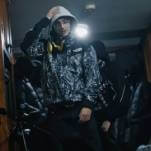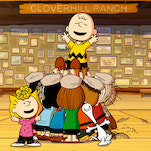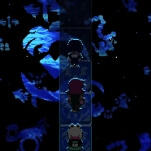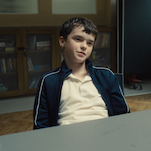Thing we were happiest to learn: Exploration would be complicated, but a realistic possibility. Earlier this year, Stephen Hawking and venture capitalist Yuri Milner announced Breakthrough Starshot, a project which intends to send a ship to Proxima Centauri, and likely fly by Proxima b. While the distance is nearly unimaginable, even compared to our recent mission to Pluto, Starshot’s team believes that current technology could build a solar sail ship, which could reach speeds between 15 to 20 percent of the speed of light. At that speed, the ship could reach the Proxima system in 20 to 30 years. Add on another four years for a signal to reach Earth across four light-years, and we could realistically receive a message from another solar system in the 2050s. Starshot’s plan is to launch a thousand tiny spaceships simultaneously, each equipped to send data back to Earth, so even if hundreds are destroyed en route by meteorites, radiation, or other unforeseen problems, plenty will survive to complete the mission.
Thing we were unhappiest to learn: It’s unlikely our grandchildren will be living on Proxima b. Besides the possible gravity issue, the planet’s very different than Earth in another respect: It orbits a red dwarf (sorry, Superman). It’s much closer to its (cooler, dimmer) sun (5 percent the distance Earth is to our sun), which means that, while the planet only gets 2 percent of the sunlight Earth gets, never getting brighter than twilight, solar wind would likely be 2000 times stronger than on Earth, bathing the planet in radiation. It’s also likely a planet so close to its star would be tidally locked, meaning one side would permanently face the star and heat up tremendously, while the other side would be permanently dark (and sub-freezing). All of these potential problems, however, are theoretical, and if the planet does rotate the way Earth does and has a thick enough atmosphere, it could be warm enough for humans. (Whether the atmosphere has oxygen is another question.)
Also noteworthy: We can’t tell if Proxima b has oxygen or is potentially habitable, but we should be able to find out soon. Spurred on by the success of the Hubble and Kepler space telescopes, several more-powerful telescopes are in the works, include the James Webb, the Giant Magellan, and the European Extremely Large Telescope (they were out of names). Between them, they should be able to tell us a lot more about Proxima and other exoplanets.
Best link to elsewhere on Wikipedia: Proxima b is only the closest on a lengthening list of potentially habitable exoplanets. In just the past decade or two, hundreds of planets have been discovered near and far, but the ones on this list meet certain criteria—not too hot or cold, likely made of rock and not gas, and not subject to too much solar radiation. Of the nine planets that meet a conservative set of criteria, the most Earthlike are Kepler-452b (orbits a similar star), Kepler-186f (similar in size), and Kepler-442b (little from column A, little from column B). The trouble is, they’re 1,402, 561, and 1,120 light-years away, respectively.
Further down the Wormhole: The planetary habitable zone is commonly referred to as the Goldilocks zone, in reference to the fairy tale, where a girl chooses between porridge that is too hot, too cold, and just right. Fairy tales have been told and retold in any number of media, but the media of choice in the 20th century was animation. Walt Disney in particular crystallized the popular conception of fairy tales around films like Snow White And The Seven Dwarfs and Cinderella. While Snow White is often credited as the first full-length animated film, that title actually belongs to El Apóstol, made in Argentina in 1917. However, the film’s studio burned down, and the only known copies of El Apóstol were destroyed. It’s one of the most significant of history’s lost films. We’ll see what other movies are gone for good next week.








































